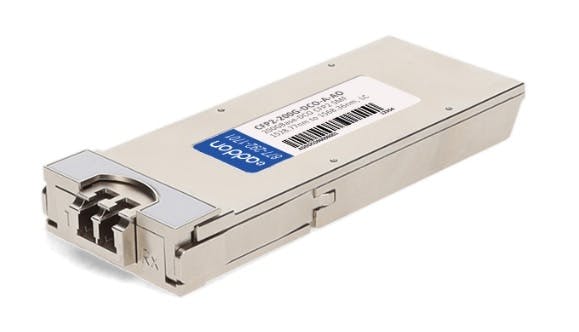Impairments can be managed with precise calculations, the Digital Signal Processor (DSP) microchip within a coherent optic is vital in resolving this complicated challenge. The DSP can improve data rates and reach by managing and modifying the transmission and reception of the light.
Over a number of years devices have been built to offset impairments, such as:
- Attenuation technologies
- Amplifiers
- Dispersion compensation filters
- Dispersion shifted fiber
- Additional devices that are expensive and need considerable time to incorporate into networks
Coherent optics eliminate needed correction devices with software in the DSP

Attenuation
This is the gradual dimming of light as it travels through a fiber, it is like a flashlight that strongly brightens the area right in front of it but further away it is dimmer. In a fiber at longer distances the light is too weak for the receiver to identify it. When the light source is too close it is also worth knowing that the opposite can occur, if the light is too bright then the receiver cannot differentiate between on and off.
Dispersion
Dispersion is created as a light wave spreads when it travels down a fiber. Plus, light wavelengths of various frequencies travel at separate speeds. These then make it challenging for a receiving optic to determine where signals start and stop. These attributes are constant so formulas in the DSP can be used to manage them, this is more cost effective than using physical equipment.
There are a few dispersion challenges in an optical network such as:
- Polarization-Dependent Loss (PDL)
- Phase Mode Dispersion (PMD)
- Chromatic Dispersion (CD)
Optical Signal to Noise Ratio
The Optical Signal to Noise Ratio (OSNR) is like static on a radio, eventually the broadcast can become ineffective due to the amount of noise (static) that is mixed with the music. There is always noise present and it can be influenced by the fiber itself, attributes of the optical device electronics, and the environmental conditions. The optical signal needs to be much stronger that the noise or the receiver will not identify the data being sent.
FEC and Programmability
Forward Error Correction (FEC) provides the detection of Bit Error Rates (BER) in an optical signal without a reverse path signal for comparison. FEC works by injecting redundant bits into the data at the transmission end and then analyzing the redundant bits at the receiving end. Calculations are used to analyze the bits to verify if the data can be corrected or if it must be transmitted again.
FEC enables some improvement to signal errors to:
- Guarantee signal integrity
- Enable greater signal distances
Integrating the DSP into the optic resolves impairments efficiently
The DSP in a coherent transceiver helps to resolve impairments. Software can adjust the phase, amplitude, and polarization features to meet the application requirements or to match the limitations of the optical fiber. PDL, PMD and CD can all be identified and fixed within the DSP. OSNR and attenuation can also be compensated via the DSP to provide higher bite rates over longer distances. Running the processing in the DSP cuts out considerable work in link planning and budgeting for optical networks.
Coherent optical transceivers can be used for a variety of applications. At the 2019 Optical Fiber Communications Conference (OFC) Andrew Schmitt Directing Analyst with Cignal AI predicted that by 2022 or 2023, the "modularization" of coherent technology will begin to cannibalize the optical hardware market.
Mastering coherent technology to build the future of networking today
At AddOn we understand the changes taking place in this market and how coherent technology can be applied to network challenge’s to reduce costs and to provide higher performance optical links. Even though the technology is new, we already have experience applying our coherent technology to reduce capex and opex costs. Currently up to 400G can be transferred on fiber which could not support 10G using the old direct detect technology.
Simply follow the links below to see our full series of coherent articles:
- Coherent Optics: The Start of a Universal Approach
- Coherent Transceivers: All You Need to Know
- Key Standards and Form Factors for Transceivers: All You Need to Know
- Industry Standards Explained & Why They Are Essential
